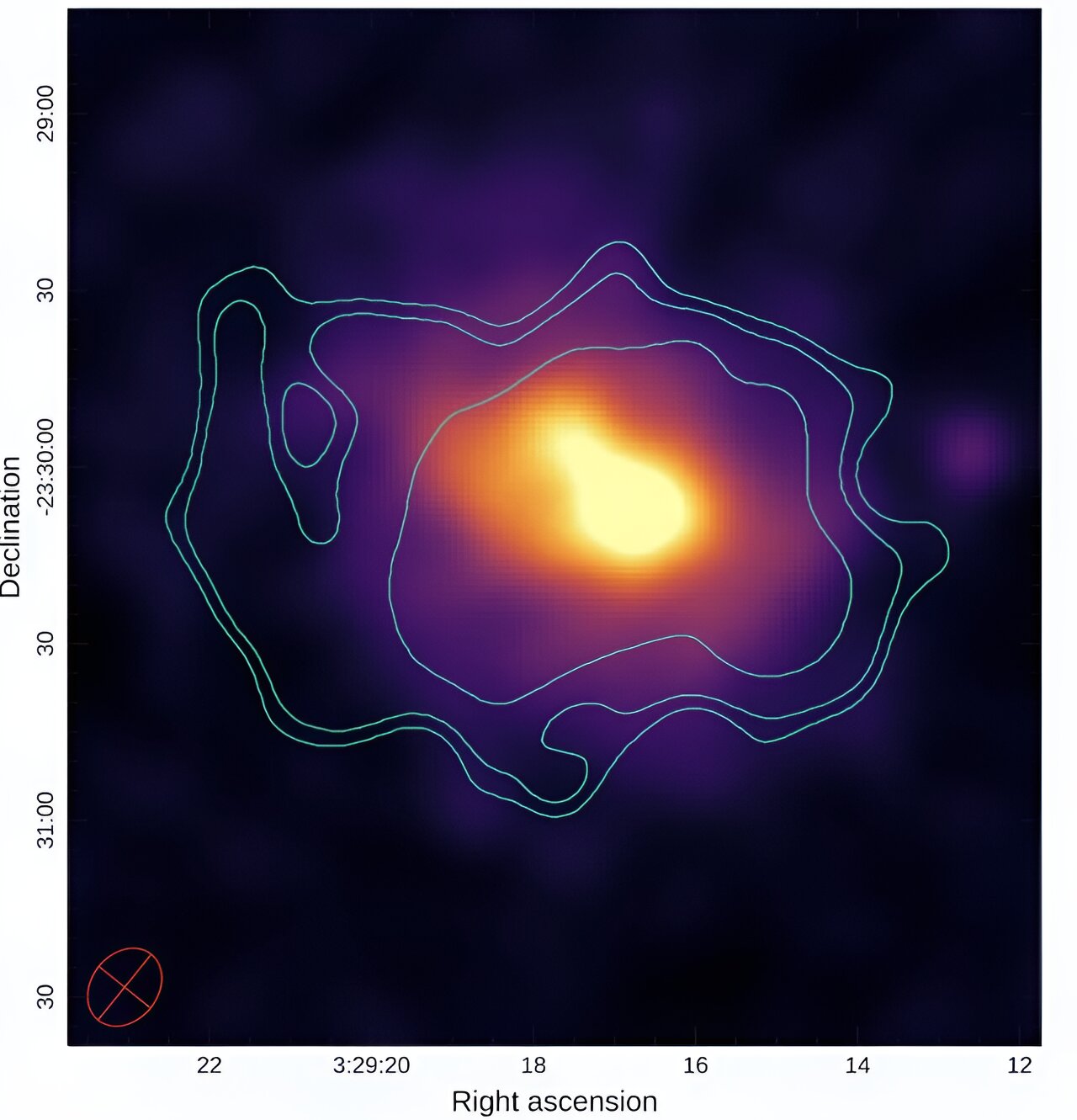× close
An international team of astronomers has performed radio observations of a massive galaxy cluster known as ACT-CL J0329.2-2330, which resulted in the detection of a new radio halo in this cluster. The finding was reported in a research paper published April 5 on the pre-print server arXiv.
Radio halos are enormous regions of diffuse radio emission, usually found at the centers of massive galaxy clusters, showcasing a regular morphology, which tends to trace the X-ray emitting intracluster medium (ICM). However, diffuse emissions generally have very low surface brightness, particularly at GHz frequencies, which makes them hard to detect. Their brightness increases at lower frequencies, unveiling the presence of these regions.
Now, a group of astronomers led by Sinenhlanhla Precious Sikhosana of the University of KwaZulu-Natal in Durban, South Africa, has found a new radio halo in ACT-CL J0329.2-2330 (or ACT-CL J0329 for short)—a galaxy cluster with a mass of about 970 trillion solar masses, at a redshift of 1.23. The discovery is a result of L-band and UHF-band observations of this cluster with the MeerKAT radio telescope as part of the MeerKAT Massive Distant Cluster Survey (MMDCS).
“In this letter, we have presented MeerKAT L and UHF-band observations of ACT-CL J0329.2-2330, a galaxy cluster at z=1.23. The low-resolution images reveal a radio halo in the cluster. (…) The MeerKAT observations were carried out at L-band with a total on-target time of 3.5 hours, using a dump rate of 8 seconds and 4,096 channels,” the researchers wrote.
By analyzing MeerKAT images, Sikhosana’s team identified extended emission at the center of ACT-CL J0329, with a largest linear size of 3.59 million light years at 1.28 GHz. MeerKAT images also show that the radio halo in ACT-CL J0329 has a smooth, regular morphology that traces the thermal bremsstrahlung emission of the intracluster medium (ICM).
Based on these results, the astronomers classified this emission as a radio halo, which means that it is the highest redshift halo so far detected.
The study found that the newly discovered radio halo has a flux density of 3.44 and 6.11 mJy at L and UHF-band, respectively. The integrated spectral index of the halo was calculated to be 1.3, while its radio power was estimated to be of 4.4 YW/Hz.
These results suggest that the halo in ACT-CL J0329 is as luminous as the halos found in nearby massive galaxy clusters, which seems to confirm that there is rapid magnetic field amplification in galaxy clusters at high redshifts.
In concluding remarks, the authors of the paper underlined that the spectral index map of ACT-CL J0329 showcases distinguishable fluctuations as steeper spectral index values are concentrated in the eastern region. This may indicate that the turbulent energy is not homogeneously dissipated in the halo volume.
More information:
S. P. Sikhosana et al, The MeerKAT Massive Distant Clusters Survey: A Radio Halo in a Massive Galaxy Cluster at z = 1.23, arXiv (2024). DOI: 10.48550/arxiv.2404.03944
© 2024 Science X Network

Dr. Thomas Hughes is a UK-based scientist and science communicator who makes complex topics accessible to readers. His articles explore breakthroughs in various scientific disciplines, from space exploration to cutting-edge research.








